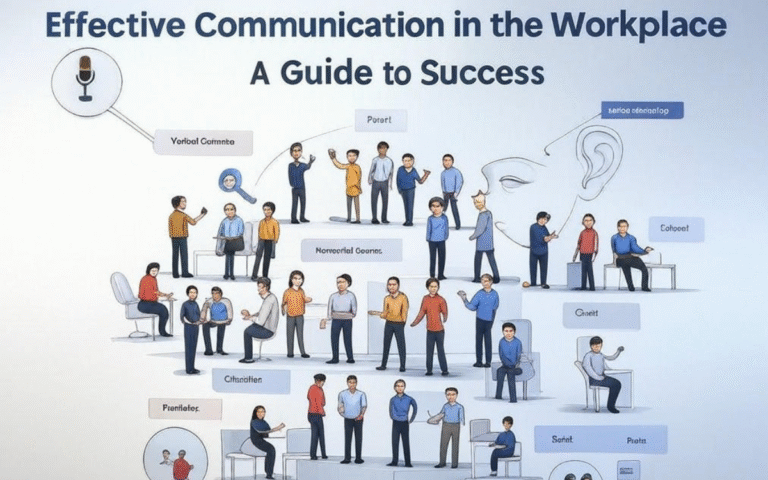Effective Communication in the Workplace: A Guide to Success
Effective communication in the workplace is more than just exchanging information-it’s the foundation of a productive, collaborative, and positive work environment. Whether you are a manager, team member, or business owner, mastering communication skills is essential for organizational success and personal growth.
What Is Effective Communication?
Effective communication is the clear and purposeful exchange of ideas and information between individuals or groups. When communication is effective, both the sender and receiver understand the message, its intent, and the desired outcome9. This clarity reduces misunderstandings, boosts productivity, and fosters trust.
Why Is Effective Communication Important?
- Boosts Productivity: Clear communication helps employees understand their roles, responsibilities, and goals, leading to higher efficiency and fewer errors37.
- Enhances Job Satisfaction: Employees who feel heard and understood are more engaged and satisfied with their jobs37.
- Reduces Conflict: Open and honest communication helps resolve issues quickly and prevents misunderstandings from escalating7.
- Builds Trust and Teamwork: Transparent communication fosters a culture of trust and collaboration, essential for any successful organization7.
Types of Workplace Communication
Understanding the various forms of communication is key to choosing the right method for each situation57:
| Type | Description | Example |
|---|---|---|
| Verbal | Spoken words, either face-to-face or via calls | Meetings, presentations |
| Non-verbal | Body language, facial expressions, gestures | Eye contact, posture |
| Written | Messages conveyed through writing | Emails, reports, memos |
| Visual | Use of images, charts, or graphs to support information | Infographics, dashboards |
Tips for Effective Communication in the Workplace
1. Be Clear and Concise
Use straightforward language and avoid jargon. Make your points specific and leave room for questions to ensure understanding49.
2. Practice Active Listening
Engage fully when others speak, ask clarifying questions, and summarize their points to show you understand and value their input49.
3. Set Clear Expectations
Define roles, responsibilities, and goals so everyone knows what is expected. This minimizes confusion and boosts accountability5.
4. Use the Right Communication Channel
Choose the most suitable method-face-to-face, email, chat, or visual aids-based on the message and the audience57.
5. Encourage Two-Way Feedback
Create a culture where feedback is welcomed and acted upon. This helps identify issues early and supports continuous improvement25.
6. Show Appreciation
Recognize achievements and efforts, both privately and publicly, to foster a positive and supportive environment5.
7. Stick to the Facts
Communicate objectively, focusing on facts rather than opinions or emotions, especially during conflicts7.
8. Schedule Regular Check-Ins
Hold team meetings, daily stand-ups, or one-on-ones to keep everyone aligned and address concerns promptly57.
9. Leverage Technology
Use collaboration tools and platforms to streamline communication, especially in remote or hybrid teams5.
10. Invest in Team-Building
Organize activities that build trust and encourage open dialogue among team members7.
Building Authority and Trust in Communication
To establish yourself and your organization as trustworthy and authoritative, focus on:
- Demonstrating Expertise: Share valuable, actionable insights and back them up with experience and knowledge8.
- Citing Reliable Sources: Reference high-quality external resources, such as Harvard Professional Development, for further learning.
- Internal Linking: Connect related topics within your website, such as linking this guide to articles on team collaboration or conflict resolution, to help users explore more and signal expertise to search engines610..
Conclusion
Effective communication is not just a skill-it’s a strategic advantage. By being clear, listening actively, fostering feedback, and building trust, you create a workplace where everyone can succeed. For more in-depth tips and research-backed strategies, visit resources like Asana’s communication guide and Utopia’s workplace communication tips.
Start implementing these practices today and watch your workplace transform into a more connected, productive, and successful environment.
